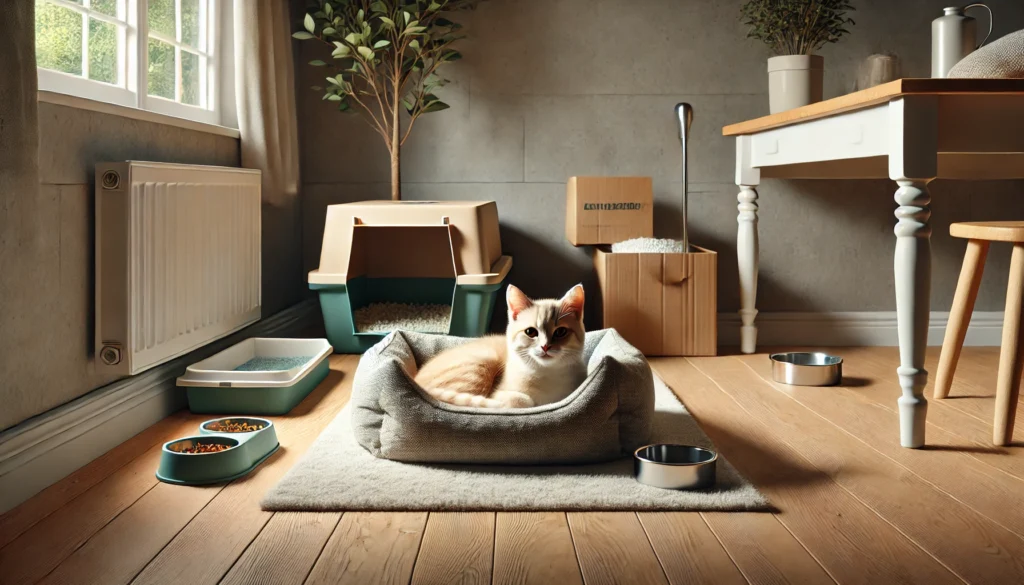Adopting a rescue cat is a beautiful act of compassion. But bringing them into your home is only the beginning. Whether they’ve experienced abandonment, trauma, or simply lived outdoors, rescue cats often need patience, structure, and understanding to thrive indoors.
Here’s how to help your new feline friend feel safe, loved, and truly at home.
Understand That Adjustment Takes Time
Every rescue cat is different. Some may adapt quickly, while others need weeks or even months.
Signs your cat is still adjusting:
- Hiding under furniture or in corners
- Avoiding touch or eye contact
- Overgrooming or not grooming at all
- Not eating much in the first few days
- Hissing, growling, or swatting when approached
These behaviors are normal. Don’t take them personally—they’re based on fear, not rejection.
Set Up a Dedicated Safe Room
Before giving them the run of the house, start with one quiet room.
- Include food and water bowls, a litter box, a soft bed, and hiding spots
- Add a cardboard box or covered bed to help them feel secure
- Limit noise and traffic in this room as much as possible
This gives your cat a controlled space to begin exploring on their terms.
Keep the Environment Calm and Predictable
Cats crave routine—especially those with a history of stress.
- Feed at the same times each day
- Clean the litter box daily and leave it in the same spot
- Avoid moving furniture or changing their safe space too early
- Keep lights, sound, and activity levels low for the first week
Predictability builds trust.
Let the Cat Come to You
One of the most important things to remember: don’t force it.
- Sit quietly in the room without trying to pet or pick them up
- Talk softly and blink slowly when they look at you (this mimics cat “kisses”)
- Let them sniff your hand before attempting any touch
Allowing your cat to approach on their own builds confidence and respect.
Use Interactive Play to Build Trust
Play is a fantastic way to create positive associations.
- Use feather wands or string toys to keep distance at first
- Play for short bursts of 5–10 minutes at a time
- Let them “win” by catching the toy—this builds confidence
Avoid noisy or erratic toys early on, which might trigger fear.
Offer Enrichment and Exploration Gradually
Once your cat is comfortable in their safe room:
- Allow access to other rooms one at a time
- Keep doors open so they can retreat to safety
- Add scratching posts, climbing furniture, and perches along the way
Variety and choice empower your cat to feel in control.
Use Treats and Positive Reinforcement
Food is a powerful tool for building trust.
- Offer small treats when your cat shows curiosity or calm behavior
- Use treats to lure them into gentle interactions or new areas
- Avoid overfeeding—tiny amounts frequently work best
This helps form positive associations with your presence and their new home.
Be Patient With Touch and Handling
Depending on their past, some rescue cats take longer to accept affection.
- Start with slow, gentle strokes on the cheeks or under the chin
- Watch body language—ears back or tail twitching means stop
- Never force a hug, carry, or pick-up session
Respect boundaries and build trust at their pace.
Provide Comfort Through Scent
Cats use scent to feel safe.
- Rub a soft cloth on your cat’s cheeks and place it around the home
- Use Feliway diffusers (synthetic feline facial pheromones) to reduce anxiety
- Place your worn clothing near their bed for familiar scent comfort
Scent helps create a feeling of ownership and familiarity.
Know When to Seek Help
If after several weeks your cat is still:
- Not eating regularly
- Hiding constantly
- Showing signs of aggression
- Refusing to use the litter box
It’s time to consult a veterinarian or feline behaviorist. Medical issues or deeper trauma may require support.
Celebrate Small Victories
Progress may look like:
- A blink held a second longer
- Sleeping in the open instead of under the couch
- A soft meow or a head bump
Every step forward is a milestone worth acknowledging.
Rescue cats have a special kind of resilience. With patience, consistency, and love, they’ll slowly begin to see your home not as a place of fear, but as their sanctuary.






